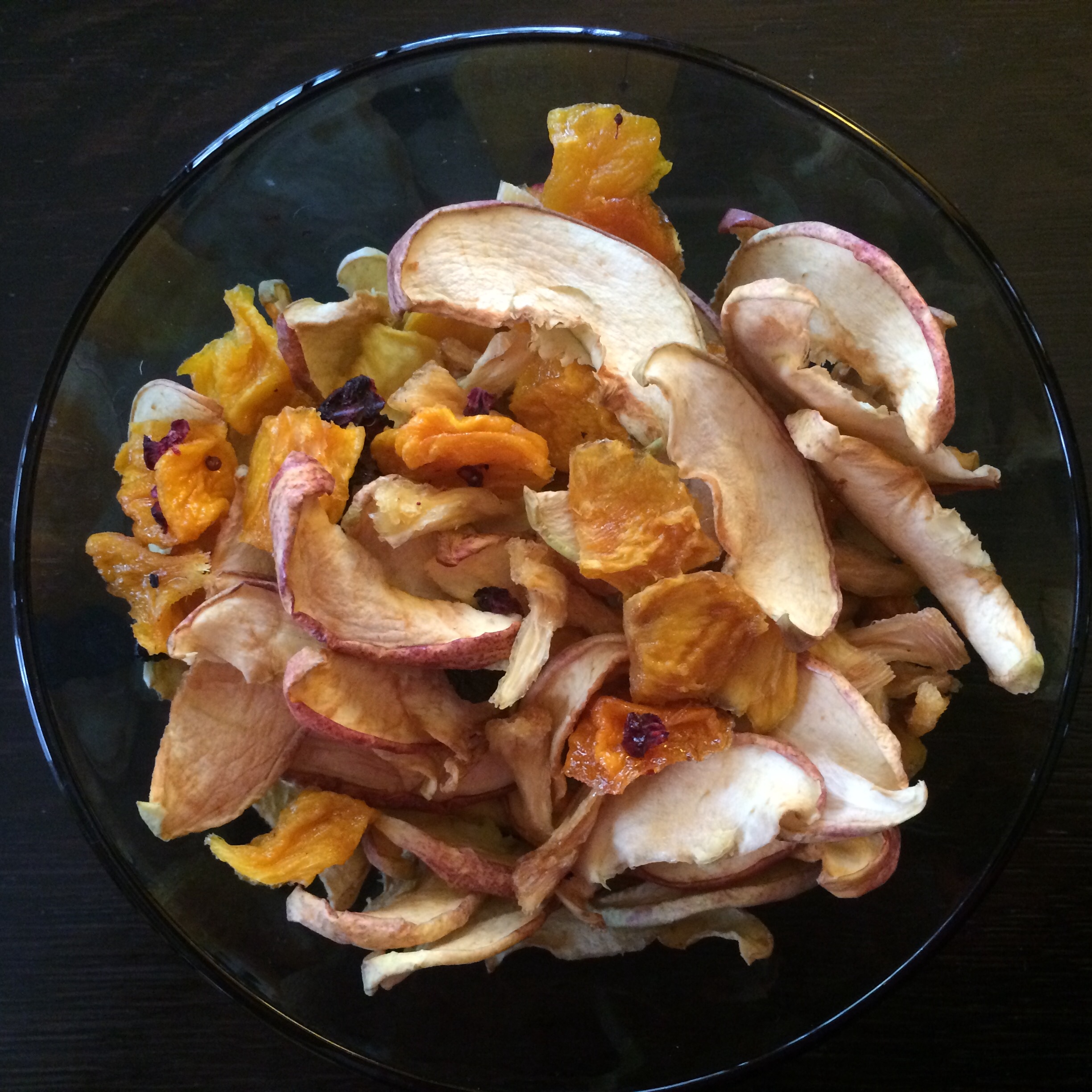Accepting your own mortality is like eating your vegetables: You may not want to do it, but it’s good for you.
Caitlin Doughty

The easiest way to get veggies and fruit on your backpacking trip is to dehydrate them. Fresh fruits – like apple and watermelon – and many vegetables – like cherry tomatoes and bell peppers – can be dried directly on the racks, but some – like carrots – need to be blanched first, which takes time and is just one more step I don’t feel like doing. So I was delighted to discover you can get fantastic results dehydrating frozen vegetables as is, no cooking required! including carrots, peas, string beans, corn, and those packages of frozen medleys – as well as a wide range of fruits like mango and pineapple.
Dehydrated vegetables can be added to any meal, and work very well with potato bark. I tend to eat dehydrated fruits all on their own. There is nothing like mango, watermelon or pineapple at the top of a hard-to-reach peak. They taste like candy; a real treat.
Pro tips:
- For best results, don’t let the fruits or veggies stack on top of each other as the dehydrate.
- Place them directly on the tray, though you may have to gently peel them when you flip them.
- Some fruits can get a little sticky or turn slightly brown. You can always add a little lime juice which also gives them a mild margarita taste.


One Response